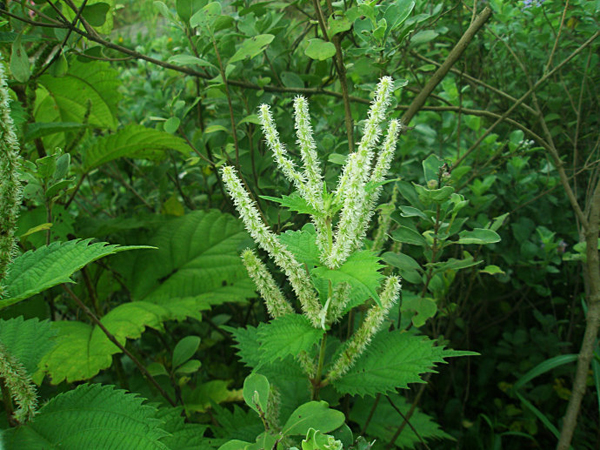When used as medicine, Cimicifuga mainly refers to the dried rhizomes of Cimicifuga heracleifolia Kom., Cimicifuga dahurica (Turcz.) Maxim., or Cimicifuga Foetida L. All of them are plants in the family Ranunculaceae. Therefore, they are sometimes referred to as Cohosh Rhizome, Bugbane Rhizome, Rhizoma Cimicifugae, Cimicifuga Rhizome, and more. But don’t confuse them with black Cohosh since all of them share the name cimicifuga, bugbane, and cohosh. Although black Cohosh is from the same Genus, it refers to another different species called Cimicifuga Cordifolia or Cimicifuga Racemosa. In China it is mainly produced in provinces of Liaoning, Jilin, Heilongjiang, Hebei, Shanxi, Shaanxi, Sichuan, and Qinghai. It is usually dug up in autumn. And next it still needs to remove soil, dry in the sun until the fibrous roots are dry, burn out or remove the fibrous roots, and then dry thoroughly in the sun again. It is used sliced and raw.

Cimicifuga
SAMPLE BURBANCE RECIPES ON HERBAL REMEDIES
The Chinese Materia Medica concludes that it is acrid and sweet in flavor and slightly cold in nature. It goes to meridians of lung, spleen, large intestine, and stomach. Regular functions are clearing away heat and toxic materials, promoting the eruption of measles by inducing perspiration, and raising Yang and prolapse. Main cimicifuga uses and indications include seasonal epidemic, fire toxin, mouth sores, sore throat, rash, headache, chills and fever, Carbuncles and boils, collapse of middle Qi, Diarrhea due to spleen deficiency, tenesmus caused by chronic dysentery, abnormal vaginal discharge in women, and metrorrhagia. Recommended dosage for Yang-ascending purpose is from 3 to 6 grams and processed with honey and wine is required; recommended cimicifuga dosage for heat-clearing and detoxicating purpose is 15 grams and raw form is ideal. And other forms like powder, compound tablets, and pills are also available.
1) Shi Shen Tang from Tai Ping Hui Min He Ji Ju Fang (Formulas of the Peaceful Benevolent Dispensary). It is combined with Ma Huang (Ephedra), Zi Su Ye (Perilla Leaf), Bai Zhi (Angelica Dahurica), Chuan Xiong (Sichuan Lovage Root), etc. to treat wind-cold cold that is with chills and fever, no sweat, headache, and cough.
2) Qing Zhen Tang from Zheng Yin Mai Zhi (Pathoconditions: Causes, Pulses, and Treatments). It is formulated with Cang Zhu (Atractylodes), Kudzu Root, Xian He Ye (Fresh Lotus Leaf), etc. to cure Yangming headache, forehead ache, vomiting, vexation, and distention and fullness.
3) Sheng Ma Ge Gen Tang from Yan Shi Xiao Er Fang Lun (Yan's Prescriptions for Infantile Diseases). It is coupled with Kudzu Root, Bai Shao (White Peony Root), Gan Cao (Licorice Root), etc. to heal the inadequate eruption or beginning of measles.

![Diseases, Symptoms, tcm, [tcmwindow.com]](/uploadFile/adImg/2015/11/11/f5cbfcc0-4df5-4646-9b9a-f316651a0199.jpg)





